The Benefits of Combining Tile and Wood Flooring
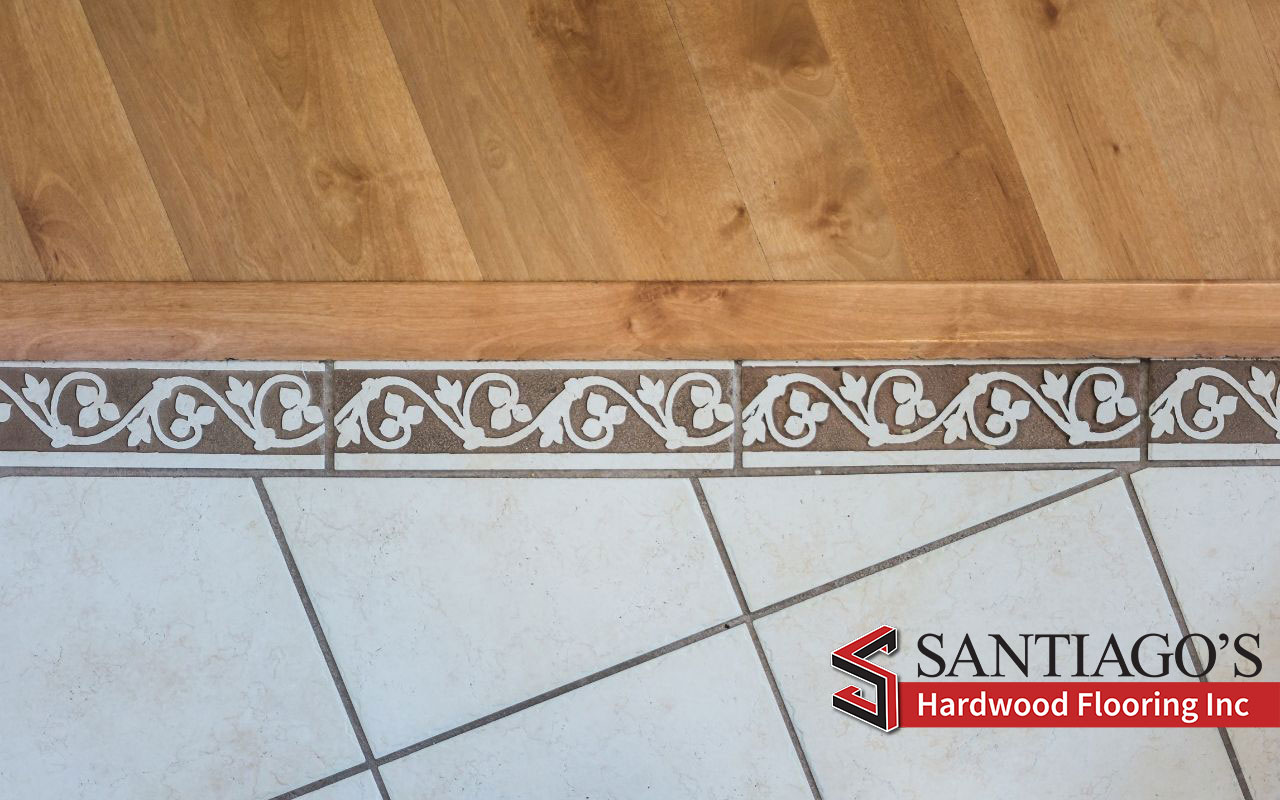
Combining tile and wood flooring offers a range of benefits that can enhance both the aesthetic appeal and functionality of your space. The marriage of these two materials creates a unique and visually interesting look that adds depth and character to any room.
The benefits of using tile flooring include its durability, water resistance, and easy maintenance. In areas prone to moisture, like kitchens and bathrooms, tile provides a practical solution that can withstand spills and frequent cleaning without damage. Wood flooring, on the other hand, brings warmth, natural beauty, and a timeless elegance to the space. It adds warmth and a touch of nature, while also offering comfort and insulation.
By combining tile and wood flooring, you can enjoy the best of both worlds. You can create distinct zones within a room, separating areas with different functions while maintaining a cohesive design. This combination allows for endless design possibilities, allowing you to create a space that is as unique as you are.
Benefits of tile flooring
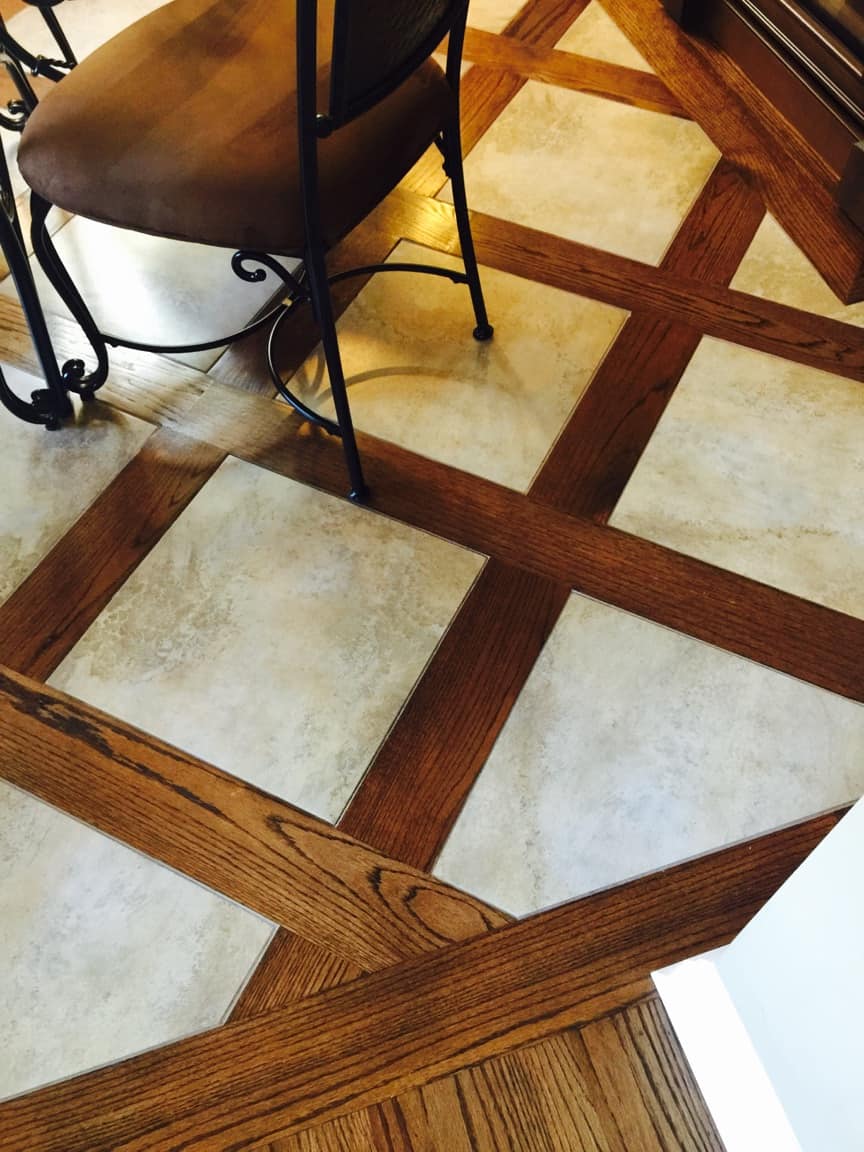
Tile flooring offers a range of benefits that make it an excellent choice for any space. One of the primary advantages of tile is its durability. Tiles are built to withstand heavy foot traffic and are resistant to scratches and dents, making them perfect for high-traffic areas like the kitchen or entryway. Additionally, tile flooring is water-resistant, making it an ideal option for bathrooms or areas prone to spills. Tile is also incredibly easy to clean and maintain, requiring only regular sweeping and occasional mopping. With a wide variety of colors, patterns, and textures available, tile flooring allows you to create a customized look that complements your style and enhances the overall aesthetic appeal of your space.
Benefits of wood flooring
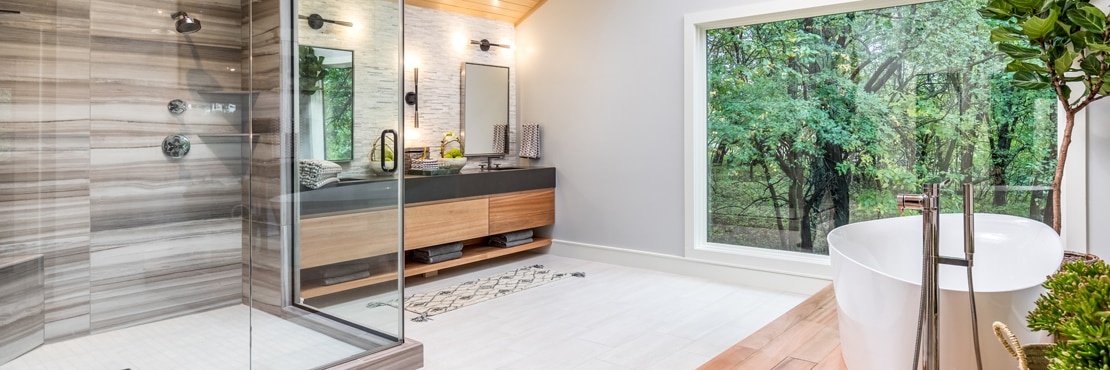
Wood flooring offers numerous benefits that make it a popular choice for homeowners. One of the main advantages of wood flooring is its natural beauty and timeless appeal. Wood provides a warm and inviting atmosphere to any space, enhancing its aesthetics and adding a touch of elegance. Additionally, wood flooring is durable and long-lasting, able to withstand heavy foot traffic and daily wear and tear. It is also relatively easy to clean and maintain, requiring simple sweeping and occasional mopping. Furthermore, wood flooring is a hypoallergenic option, as it does not trap dust, allergens, or pet dander, making it a healthier choice for those with allergies or respiratory sensitivities. Lastly, wood flooring can increase the value of your home, making it a wise investment in the long run.
Planning Your Tile and Wood Flooring Combination

When combining tile and wood flooring in your home, careful planning is essential to achieve a cohesive and stylish look. First, consider the factors that will impact your decision, such as the function of the space, the amount of foot traffic, and your personal style. Think about the color palette and design elements you want to incorporate. Next, choose tile and wood flooring materials that complement each other in terms of color, texture, and style. Create a layout plan that outlines where each type of flooring will be installed and how they will transition from one to the other. Finally, consult with a professional to ensure proper installation and maintenance. By carefully planning your tile and wood flooring combination, you can create a stunning and harmonious space in your home.
Overall, planning your tile and wood flooring combination involves considering factors such as function, style, color, and layout to achieve a cohesive and visually appealing result.
Factors to consider when combining tile and wood flooring

When combining tile and wood flooring in your home, there are several important factors to consider. First and foremost, think about the function of the space where you’ll be installing the flooring. Tile is a popular choice for areas that are prone to moisture, such as bathrooms and kitchens, while wood flooring is often preferred in living rooms and bedrooms for its warmth and elegance.
Another factor to keep in mind is the amount of foot traffic each area experiences. Tile is known for its durability and ability to withstand heavy use, making it a great option for high-traffic areas. On the other hand, wood flooring may require more maintenance and might be better suited for lower-traffic spaces.
Additionally, consider your personal style and the overall aesthetic you want to achieve. Choose tile and wood flooring materials that complement each other in terms of color, texture, and style. This can help create a harmonious and visually appealing look throughout your home.
Lastly, think about the layout and transition between the two materials. Plan where each type of flooring will be installed and how they will seamlessly transition from one to the other. This could be done through the use of borders, moldings, or other design elements that bring the two materials together.
By taking these factors into consideration, you can ensure a successful combination of tile and wood flooring that not only looks beautiful but also fits the needs of your space.
Design tips for a cohesive look
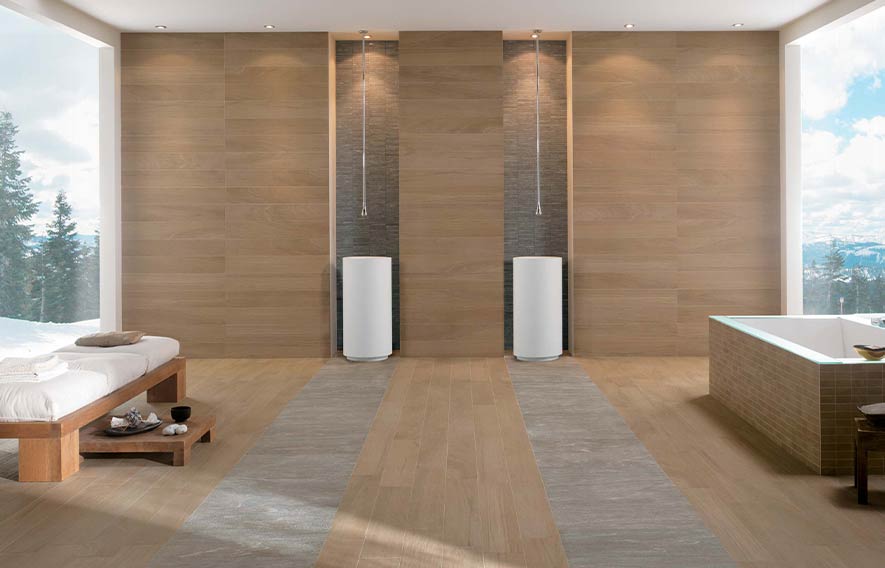
When combining tile and wood flooring, it’s important to consider the overall design and aesthetic you want to achieve. Here are some design tips to help you create a cohesive look:
- Choose complementary colors: Select tile and wood flooring materials that complement each other in terms of color. Opt for shades that harmonize and create a cohesive palette throughout the space.
- Consider texture: Incorporate different textures to add visual interest and depth. For example, pairing a smooth wood flooring with a textured tile can create a striking contrast.
- Create a focal point: Use a different tile pattern or design as a focal point in the room. This can be a decorative mosaic or a unique tile layout that draws attention.
- Use transition pieces: Incorporate transition pieces such as thresholds or borders to seamlessly blend the tile and wood flooring. These elements can help create a smooth and cohesive transition between the two materials.
- Balance the proportions: Consider the size and scale of each flooring material in relation to the room. A larger tile size might work well in a spacious area, while smaller wood planks can create a cozy and intimate feel.
By following these design tips, you can achieve a cohesive and visually appealing look when combining tile and wood flooring in your home. Remember to consider your personal style and preferences to create a space that reflects your individual taste.
Popular Tile and Wood Flooring Combinations

When it comes to combining tile and wood flooring, there are a variety of popular combinations that can create a stunning and unique look in your home. One popular option is to pair a light-colored tile with a rich, dark wood flooring. This creates a beautiful contrast and adds depth to the space. Another popular combination is to use wood flooring in the main living areas and then transition to tile in the kitchen or bathroom. This allows for easy cleanup and adds a touch of elegance to these high-traffic areas. Additionally, mixing different sizes and patterns of tile with wood flooring can create a visually interesting and dynamic look. Whether you prefer a modern, sleek design or a more rustic and traditional style, there are endless possibilities for combining tile and wood flooring to create a truly personalized and beautiful space.
Types of tile and wood flooring that work well together

When it comes to combining tile and wood flooring, certain types of tile and wood work together harmoniously to create a visually stunning and cohesive look. For example, pairing dark hardwood floors with light-colored tiles can create a striking contrast and add depth to the space. On the other hand, light wood flooring can be beautifully complemented by colorful and patterned tiles for a more vibrant and eclectic look. Additionally, using porcelain or ceramic tiles with a wood-like finish can mimic the warmth and texture of real wood flooring, making them a great option for achieving a seamless blend. Ultimately, the key is to choose tile and wood flooring options that complement each other in terms of color, pattern, and texture, creating a cohesive and visually appealing space.
Inspiring design ideas for your home

When it comes to combining tile and wood flooring, the possibilities for creating unique and inspiring designs are endless. Here are some design ideas to help you transform your home:
- Herringbone pattern: Install wood flooring in a herringbone pattern and complement it with large, rectangular tiles in a coordinating color. This classic design adds a touch of elegance to any space.
- Mixed medley: Create a visually stunning focal point by using different types of wood and tile in a mosaic-like pattern. Play with colors, textures, and sizes to create a one-of-a-kind look.
- Border accents: Add visual interest to a room by using tiles as a border or accent around the perimeter of the wood flooring. This can create a sense of separation between different areas while still maintaining a cohesive look.
- Transition zones: Use a combination of wood and tile to define transition zones in open-concept spaces. For example, use wood in the living room area and tile in the kitchen or dining area to create distinct zones while still keeping a harmonious flow.
- Statement staircase: Make a statement by covering your staircase risers with decorative tiles while leaving the treads in wood. This creates a stunning contrast and adds an element of surprise to your home’s design.
Remember, the key is to let your creativity shine and choose combinations that truly reflect your personal style and vision for your home.
Installation and Maintenance Tips

When combining tile and wood flooring, proper installation is essential to ensure a seamless and durable result. Here are some tips to help you during the installation process:
- Hire a professional: It is recommended to work with a professional who has experience in installing both tile and wood flooring. They will ensure that the installation is done correctly and in a way that achieves a cohesive look.
- Use transition pieces: When transitioning between tile and wood flooring, it is important to use transition pieces or edge-protection profiles. These will create a smooth and visually appealing transition between the two materials.
- Follow manufacturer guidelines: Make sure to carefully read and follow the manufacturer’s guidelines for both the tile and wood flooring. This will ensure that you are installing them correctly and in a way that maintains their warranty.
Once your tile and wood flooring combination is installed, proper maintenance is key to preserving their beauty. Here are some maintenance tips to keep in mind:
- Regular cleaning: Clean your tile and wood flooring regularly to remove dirt and debris. Use gentle cleaning solutions that are appropriate for each material.
- Avoid harsh chemicals: Avoid using harsh chemicals or abrasive cleaners on both tile and wood flooring as these can damage the surfaces. Instead, opt for mild cleaners and follow the manufacturer’s recommendations.
- Protect against moisture: Both tile and wood flooring can be sensitive to moisture. Make sure to wipe up any spills or moisture immediately to prevent damage. Use mats or rugs in high-moisture areas such as kitchens and bathrooms to provide extra protection.
By following these installation and maintenance tips, you can ensure that your tile and wood flooring combination not only looks beautiful but also stands the test of time.
Installing tile and wood flooring together

Installing tile and wood flooring together requires careful planning and precise execution to achieve a seamless and visually appealing result. When undertaking this project, it is recommended to hire a professional with experience in installing both types of flooring. They will ensure that the installation is done correctly, following the manufacturer’s guidelines to maintain their warranty.
One key factor to consider is the transition point between the two materials. Using transition pieces or edge-protection profiles will create a smooth and visually appealing transition. These pieces can be chosen to match the overall design and style of the room.
Proper installation techniques for both tile and wood should be followed, including appropriate subfloor preparation, adhesive application, and grout sealing for the tile. This will ensure a durable and long-lasting combination of tile and wood flooring in your home.
Maintaining the beauty of your mixed flooring
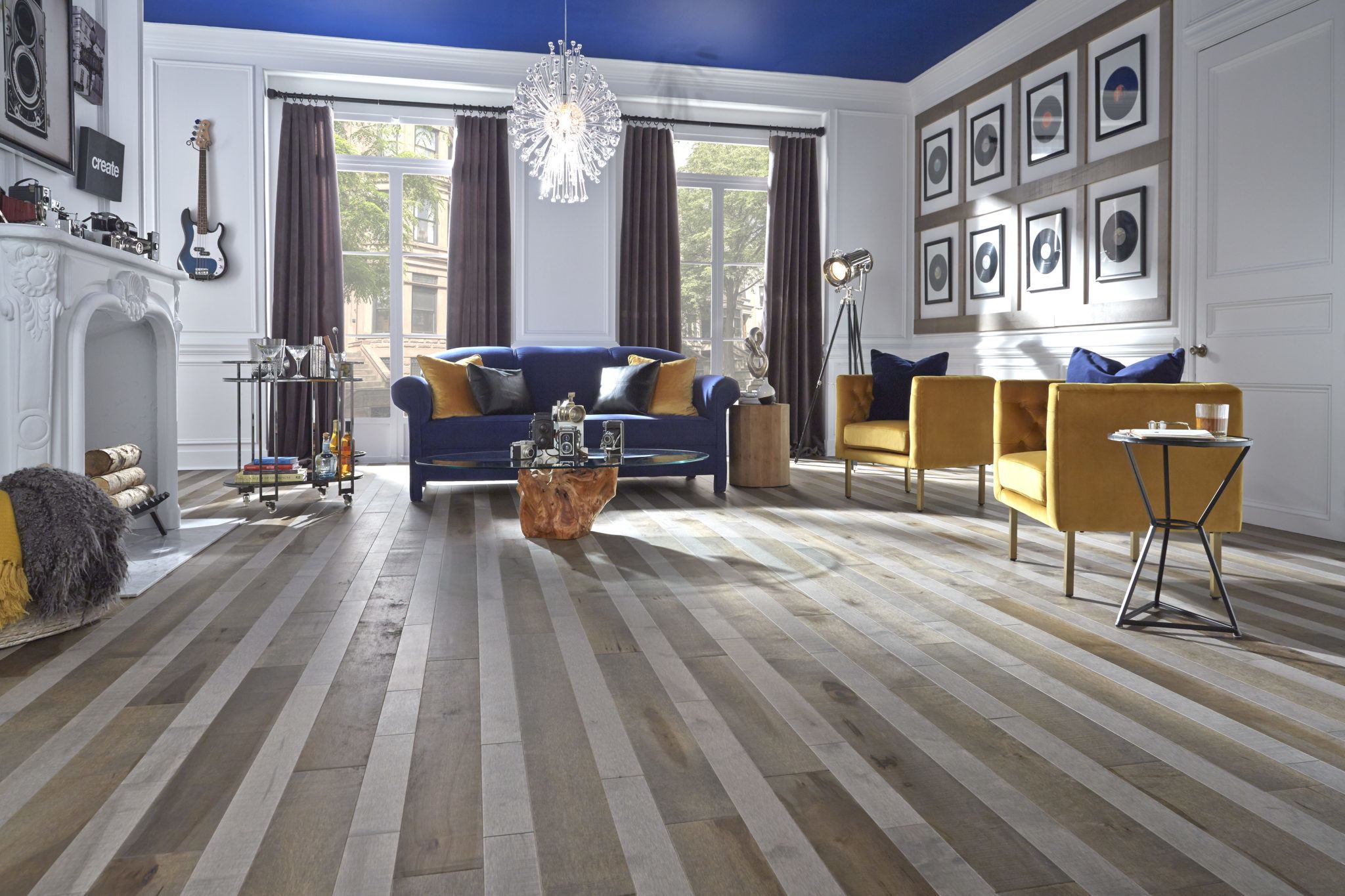
To ensure that your mixed tile and wood flooring continues to look beautiful and pristine, it’s important to implement proper maintenance routines. Here are some tips to help you maintain the beauty of your mixed flooring:
- Regular Cleaning: Sweep or vacuum your flooring regularly to remove dust, dirt, and debris. Use a damp mop or a specifically formulated cleaner for your specific flooring materials.
- Avoid Harsh Chemicals: When cleaning your tile and wood flooring, avoid using harsh chemicals that can damage the surfaces. Opt for gentle, pH-neutral cleaners recommended by the manufacturers.
- Protect from Scratches: Place felt pads or area rugs in high-traffic areas to prevent scratches and dents from furniture and heavy foot traffic.
- Seal Grout Lines: If your mixed flooring includes tile with grout lines, consider sealing the grout to prevent staining and discoloration.
- Address Spills and Stains Promptly: Clean up spills immediately to prevent permanent staining on your flooring. Use a soft cloth or a mild stain remover for stubborn stains.
By implementing these maintenance practices, you can keep your mixed flooring looking beautiful and in top condition for years to come.
Pros and Cons of Mixing Tile and Wood Flooring

When it comes to combining tile and wood flooring, there are both pros and cons to consider. Here are some key points to keep in mind:
Pros:
- Unique Aesthetic: Mixing tile and wood flooring creates a custom look that adds visual interest and a sense of creativity to your space.
- Versatility: This combination allows you to define different areas within a room by using different materials. You can isolate certain elements or create designated zones.
- Durability and Resilience: Tile flooring is known for its durability, resistance to stains, and ease of maintenance. Wood flooring adds warmth and elegance to a space.
- Increased Property Value: A well-executed combination of tile and wood flooring can enhance the overall value of your home.
Cons:
1. Installation Challenges: The installation process for combining tile and wood flooring can be complex, requiring professional expertise and precision.
2. Height and Transition Issues: The difference in height between the two materials can pose challenges for transitions and may require additional materials or solutions.
3. Potential Maintenance Differences: Tile and wood flooring have different cleaning and maintenance requirements, which may require separate care routines.
Overall, mixing tile and wood flooring offers a unique and visually appealing option for homeowners. However, careful consideration should be given to ensure a seamless and functional transition between the two materials.
Advantages of combining tile and wood flooring

Combining tile and wood flooring offers several advantages that homeowners should consider.
Firstly, this unique combination creates a visually appealing and custom look that adds a sense of creativity and sophistication to any space. The contrasting textures and colors of tile and wood can create a beautiful and striking aesthetic that captures attention.
Additionally, this combination allows for versatility in design. With different materials, you can define separate areas within a room or create designated zones for specific activities. This can help create a more functional and organized space.
Furthermore, tile flooring is known for its durability, resistance to stains, and ease of maintenance, while wood flooring adds warmth and elegance. By combining the two, you can enjoy the best of both worlds in terms of durability and aesthetic appeal.
Lastly, a well-executed combination of tile and wood flooring can enhance the overall value of your home. The unique and upscale look created by this combination can attract potential buyers and increase the market value of your property.
In conclusion, the advantages of combining tile and wood flooring include a unique aesthetic, versatility in design, durability, and increased property value. By carefully selecting and integrating these two materials, you can create a truly eye-catching and functional space in your home.
Challenges to be aware of in maintenance and installation

When combining tile and wood flooring, there are a few challenges to be aware of in terms of maintenance and installation.
One challenge is the difference in height between the two materials. Tile is typically thicker than wood flooring, so it’s important to choose transition pieces that can effectively bridge the height difference. This ensures a smooth and seamless transition between the two surfaces and reduces the risk of tripping or stubbing toes.
Another challenge is the potential for moisture damage. Tile is moisture-resistant, while wood flooring is more susceptible to water damage. It’s crucial to properly seal the wood flooring and take precautions to prevent moisture from seeping into the joints. Regular maintenance, such as drying spills promptly and using area rugs in high-moisture areas, can help protect the wood flooring.
Additionally, certain cleaning products and methods that are safe for tile may not be suitable for wood flooring. It’s important to follow manufacturer recommendations and use the appropriate cleaning products to avoid damaging either material. Regular maintenance, such as sweeping and light mopping, can help keep both tile and wood flooring in good condition.
Lastly, coordinating the installation of both tile and wood flooring materials requires careful planning and coordination between contractors. It’s essential to hire experienced professionals who can seamlessly install both materials and ensure a cohesive look.
In conclusion, while there are some challenges in terms of maintenance and installation when combining tile and wood flooring, they can be overcome with proper planning, maintenance, and hiring experienced professionals. By taking these factors into consideration, you can enjoy the beautiful and functional combination of tile and wood flooring in your space.
Conclusion

In conclusion, the combination of tile and wood flooring offers a multitude of benefits, such as creating a unique and visually appealing aesthetic. The versatility of this mix allows for endless design possibilities, allowing homeowners to customize their space to their own personal style. However, it is important to carefully plan and consider factors such as height differences and moisture protection during the installation process. Regular maintenance and proper cleaning techniques are crucial to preserving the beauty and longevity of both flooring materials. While there may be challenges to overcome, with the right planning, maintenance, and professional installation, the combination of tile and wood flooring can result in a stunning and harmonious blend that elevates the overall aesthetic of any space.
Achieving a harmonious blend with tile and wood flooring

Combining tile and wood flooring can create a harmonious blend that adds depth and visual interest to any space. The key to achieving this harmonious blend lies in careful planning and consideration of factors such as color, texture, and pattern. By selecting tile and wood flooring options that complement each other in terms of color palette and design style, you can create a cohesive look that enhances the overall aesthetic of your space. Additionally, using transition elements such as tile borders or moldings can seamlessly merge the two flooring materials, creating a smooth and visually pleasing transition. With the right combination of tile and wood flooring, you can achieve a harmonious blend that elevates the style and ambiance of your home.
FAQs about combining different types of flooring surfaces
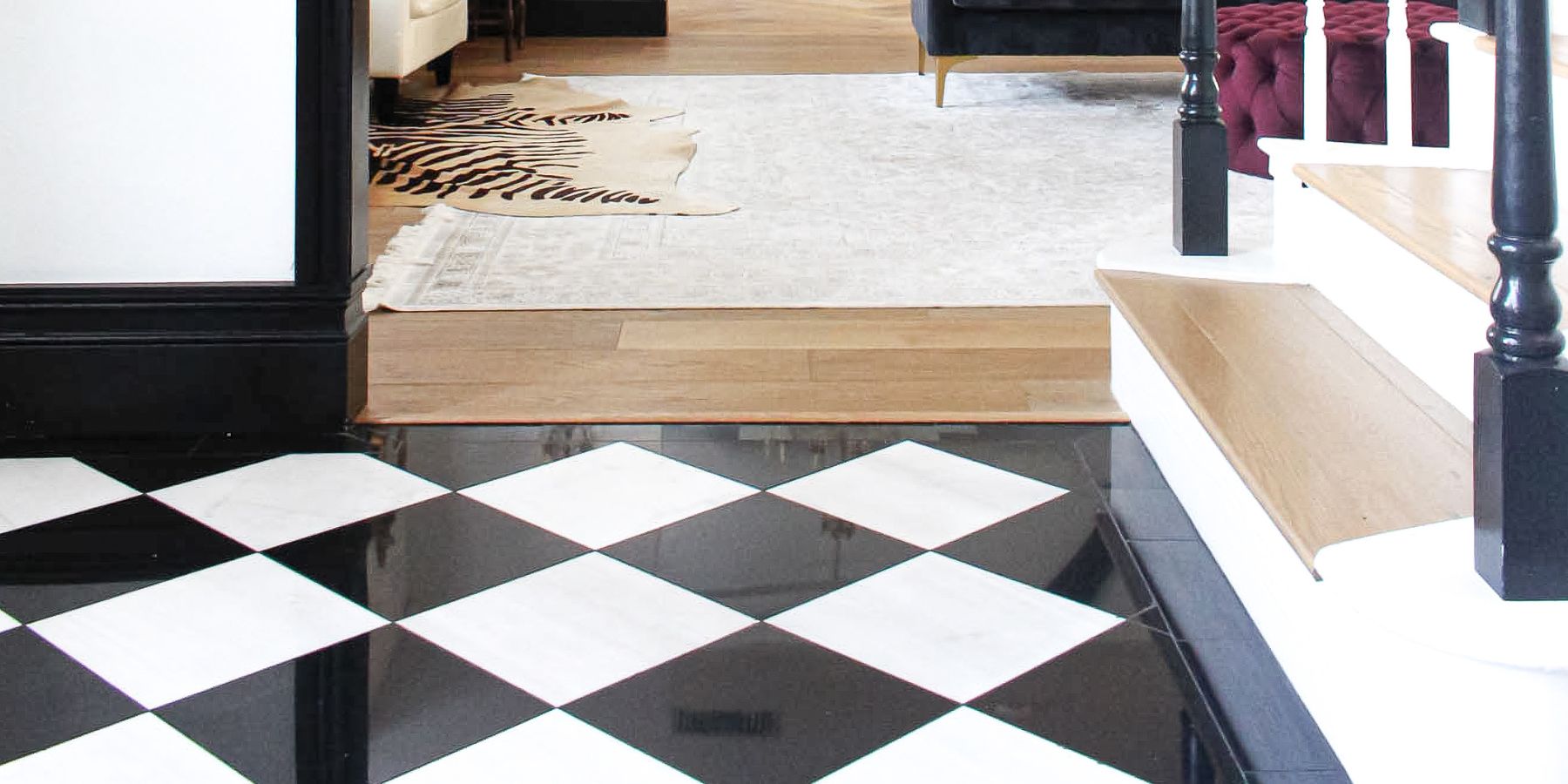
Here are some commonly asked questions about combining different types of flooring surfaces:
- Can I mix hardwood and vinyl flooring? Yes, you can mix hardwood and vinyl flooring to create a unique and stylish look. Just make sure to choose colors and styles that complement each other.
- Is it possible to combine tile and carpet flooring? Yes, you can combine tile and carpet flooring by using transition strips or thresholds to create a seamless transition between the two surfaces.
- Can I mix different types of tile? Yes, you can mix different types of tile to create a visually interesting pattern or design. Just be mindful of the color palette and textures to ensure a cohesive look.
- What are the advantages of combining different types of flooring surfaces? Combining different types of flooring surfaces allows you to create depth, visual interest, and customize the look of your space. It also provides practical benefits, such as durability and easy maintenance.
Remember to consult with a professional flooring installer to ensure proper installation and to address any specific concerns you may have about combining different flooring surfaces.
